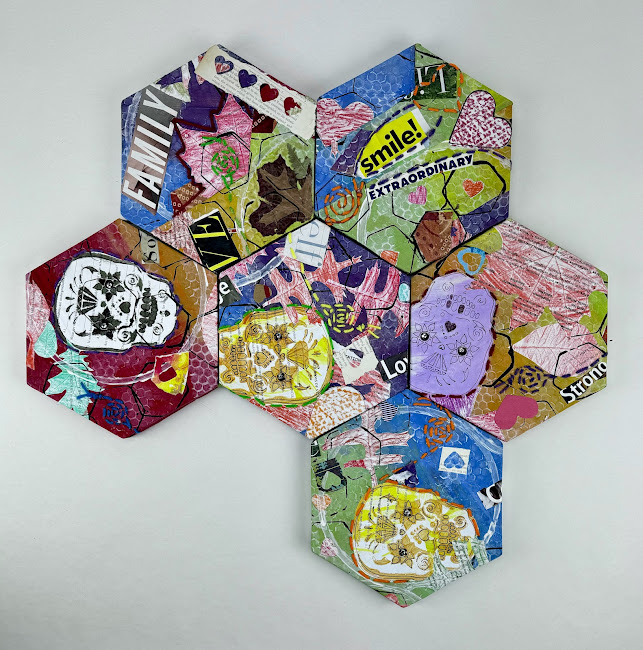Kayla Lockwood
This work reflects on the shifting nature of desert landscapes and how they’re visually and culturally framed. Made by gluing yarn onto three hexagonal wood panels, the piece mimics the layered patterns of sediment, erosion, and drought common to the American Southwest. The palette—greens, browns, and ochres—draws from dried vegetation, mineral buildup, and traces of human intervention, referencing both environmental cycles and imposed boundaries.
The modular format echoes mapping practices and land division, while the material choices complicate the surface’s meaning. Yarn typically signals softness or function, but here it’s fixed and decorative, resisting the comfort of textile and the precision of cartography. The result is a surface that sits between image and object, suggesting landscape without representing it directly.
This piece questions how desert environments—fluid and constantly transforming—are stylized into symbols of permanence or emptiness. Through repetition and layering, the work points to how visual language can both echo and distort place.
Part of a broader inquiry into memory, land, and representation, this work considers how materials stand in for shifting terrain. It asks what’s lost when landscapes are aestheticized, and what remains when the land refuses to stay still.



Comments
Post a Comment